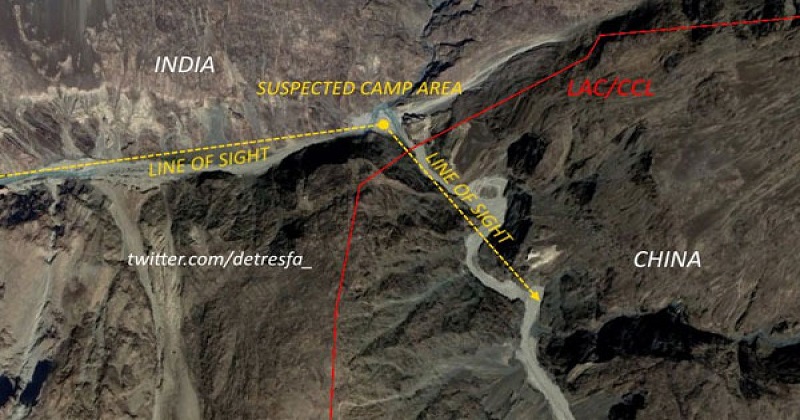
The newest satellite imagery analyzed by India Today TV shows the increased Chinese action near the Naku La boundary in Sikkim. Earlier, a report by India Today had emphasized the building of roads and new stations by the Chinese ground troops in this region. The People’s Liberation Army (PLA) activity opposite Naku La developed after the Galwan valley collision in eastern Ladakh.

Doklam and Naku La have survived the flashpoints where Indian and Chinese troops have come in direct standoff circumstances in recent times. The Doklam plateau, near the critical India-Bhutan-China trijunction, has been the ground zero of the 2017 standoff between Indian and Chinese troops. Earlier this year in January, a minor face-off was recorded between the two troops near Naku La.

The latest satellite pictures, solely obtained by India Today TV, verify intensified movement at Chinese stations opposite the Naku La border, as new as of March 12. High-resolution photographs, taken in the morning of March 12 by the Synthetic-Aperture Radar (SAR) satellites of space company Capella Space, verify the presence of military vehicles, new camps, and further buildings by the PLA. The latest imagery displays an added assemblage of potential PLA military vehicles and combined buildings at a Chinese post, about 4 km from the boundary. Another collection of pictures correlated with an earlier optical satellite image, captured by Planet Labs satellites in September last year, validates the continuing activity at what seems to be a recently built PLA observation post. While the optical photograph from September last year explicated unearthed land with symbols of little human presence, the SAR picture, captured earlier this month, reveals various vehicles and fresh camp-like buildings.

More extensive roads witnessed in the satellite imagery from last September appear to be enduring more buildings which may involve potential blacktopping of the roads. Heightened exercises at another PLA post, in the north-east of Naku La, was first recognized by US-based geospatial analytics company Hawkeye 360 last year. Chris Biggers, Director of Insights at Hawkeye 360 had detected PLA’s self-propelled artillery at this place last year.Meantime, the Indian Air Force (IAF) is estimated to advance its second squadron of the Rafale combat aircraft at the Hasimara airbase over the next few weeks. The movement is fixed to work as a credible counter to approaching Chinese warnings along the eastern front.
The forthcoming Rafale squadron in West Bengal’s Hasimara is expected to give a strong deterrence on any Chinese budge in this area. With near 100 km distance from Doklam, and just about 200 km away from Sikkim’s Naku La, IAF’s second collection of combat jets will be strategically set to counter the Chinese attack. Earlier this year, a Chinese state broadcaster revealed footage of a PLA post facing the Sikkim boundary. Chinese media reports alleged that the post has been built at an altitude of over 5000 km in the mountains. The CCTV visuals revealed an obscure-looking observation station with a large tunnel-like underground environment.
Read more; Kerala CM Pinarayi Vijayan is ‘driving a car without fuel’ ; Rahul Gandhi
India stated that it is conscious of the expansion of Chinese infrastructure in the boundary areas opposite the country in the Tibet region. Replying to a written question in Parliament on “Chinese construction along the Indo-China border”, V Muraleedharan, Minister of State for External Affairs said, “The Indian government has increased the budgetary allocation for construction of roads and bridges in the border areas.”
Source; India Today

Post Your Comments